
Nilgiri Chilappan
| Photo Credit: Special arrangement
At the intersection of art and science, lies the realm of botanical illustration. For Suresh Ragavan, a bird artist, who has served as a botanical illustrator at the Botanical Survey of India for over 33 years, this realm has not only been a source of his bread and butter, but inspiration too that kept fuelling his passion for Nature. This passion has now translated into a solo exhibition — titled, Brushstrokes of Endemic Echoes — of his creations, 157 of which adorn the Kadambari Art Gallery, DakshinaChitra Museum, Chennai.
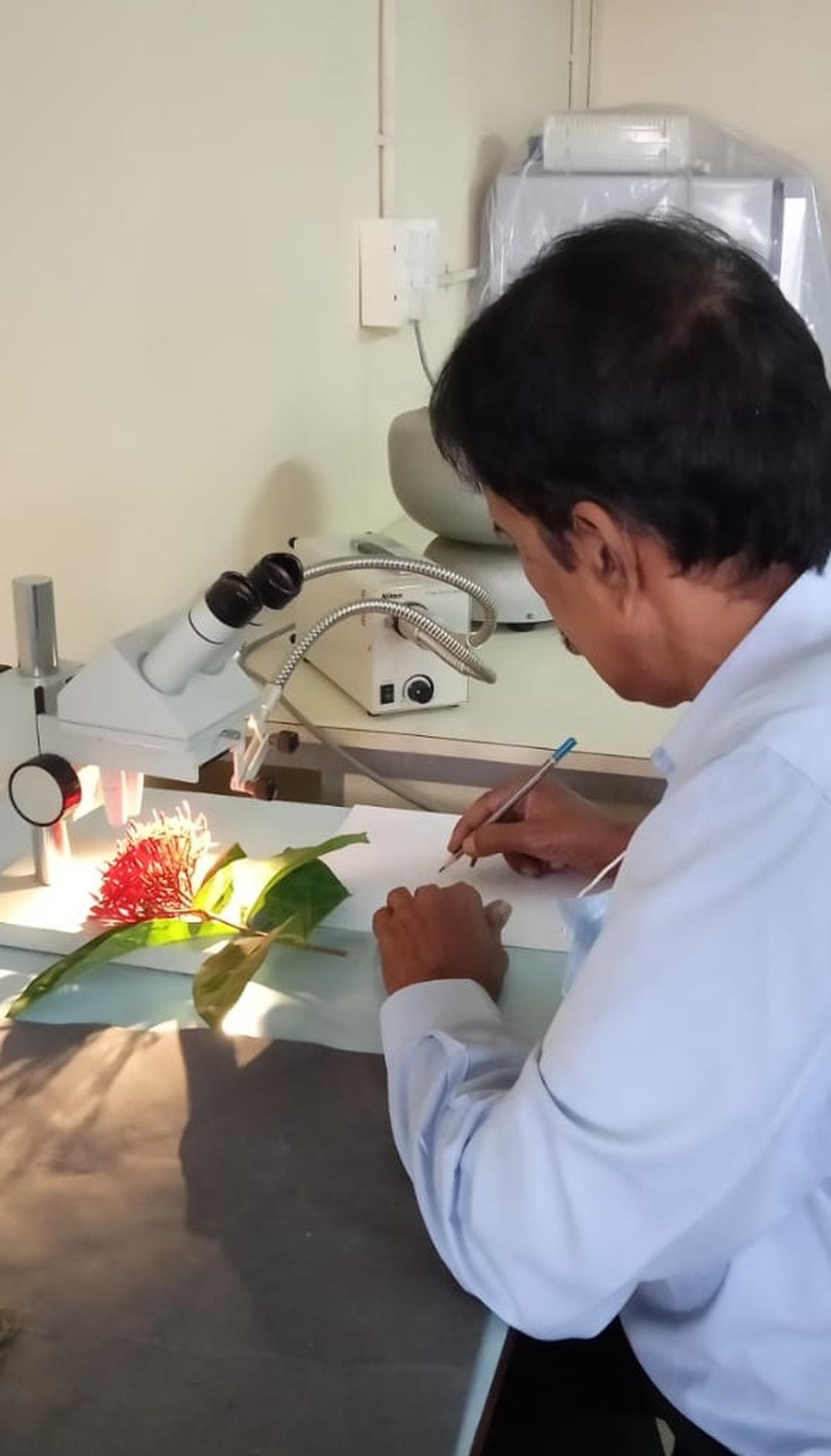
Suresh captures microscopic details, like ovary shape, stamen arrangement, or leaf venation while working under a microscope
| Photo Credit:
Special arrangement
“A botanical illustrator faces many challenges, both artistic and scientific. One of the biggest is achieving scientific accuracy — even the tiniest mistake in a leaf shape or petal count can lead to rejections from botanists. Getting final approval often means multiple rounds of corrections, especially when working on species with minute differences, like male and female plants or visually similar varieties,” explains Suresh, about the nitty-gritty of his artistic endeavours. “Capturing microscopic details like ovary shape, stamen arrangement, or leaf venation requires intense focus and sometimes working under a microscope. There’s also the challenge of interpreting incomplete or wilted specimens collected from the field. Above all, patience and precision are constant companions in this demanding, but rewarding work” he adds.
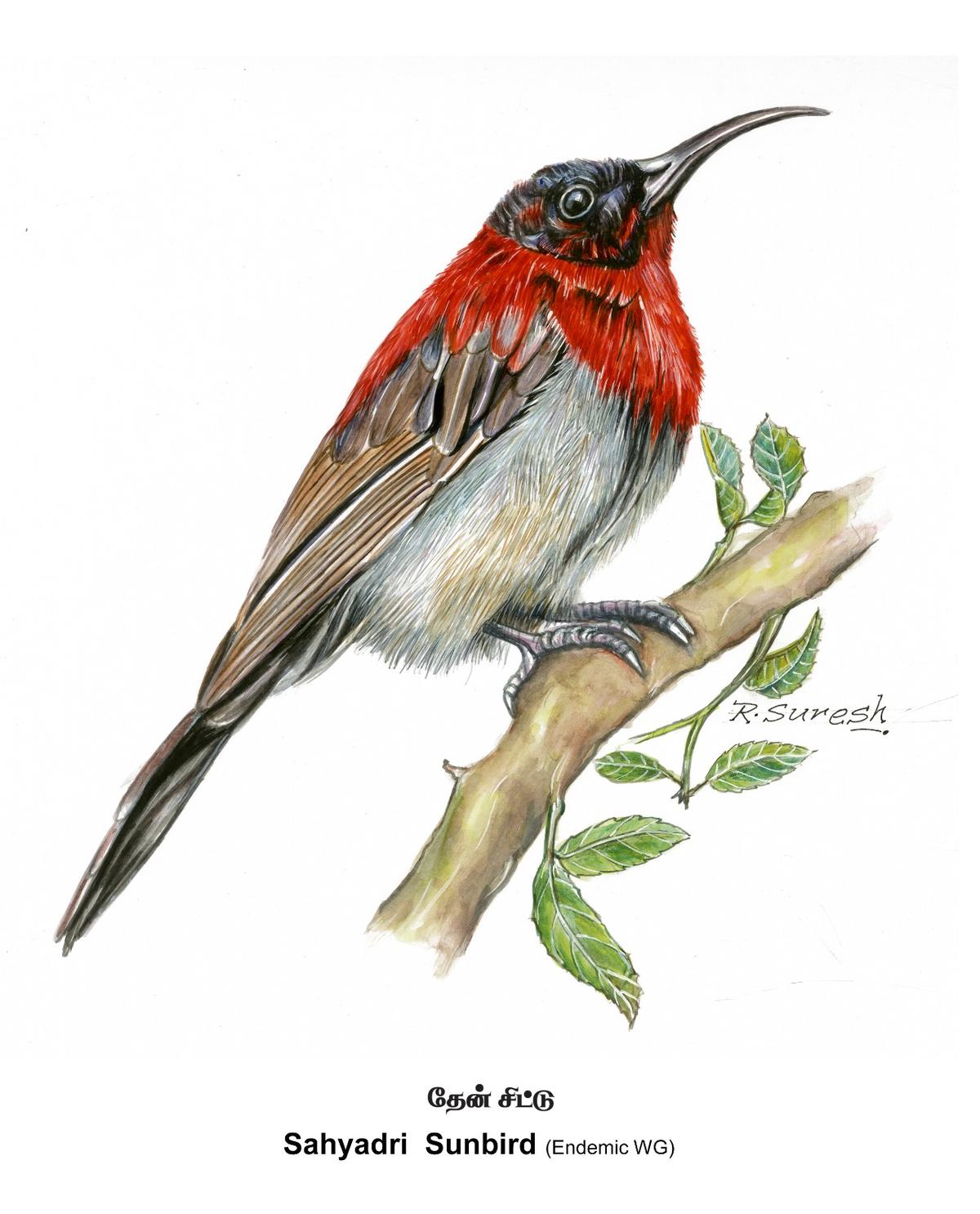
Vigors’s sunbird
| Photo Credit:
Special arrangement
A graduate of the Government College of Arts and Crafts, Chennai (1988), Suresh began his professional journey, driven by a mission to use art as a tool for conservation. In doing so, he has documented and painted a vast array of species, including wild animals, orchids, butterflies, and especially birds.
He has studied and illustrated over 157 endangered bird species, ensuring that each anatomical feature — beak, feet, feather pattern, body posture, and even minute sexual dimorphisms between males and females — is faithfully represented. “In total, I have nearly 550 paintings. This exhibition only showcases endangered birds in the Western Ghats that I have documented over the years. The list of endemic birds featured at the exhibition includes Pallas’s fish eagle, mangrove pitta, Nilgiri thrush, Vigors’s sunbird, great hornbill, Nilgiri Chilappan, flame-throated bulbul, Malabar grey hornbill and black-and-orange flycatcher,” he adds.
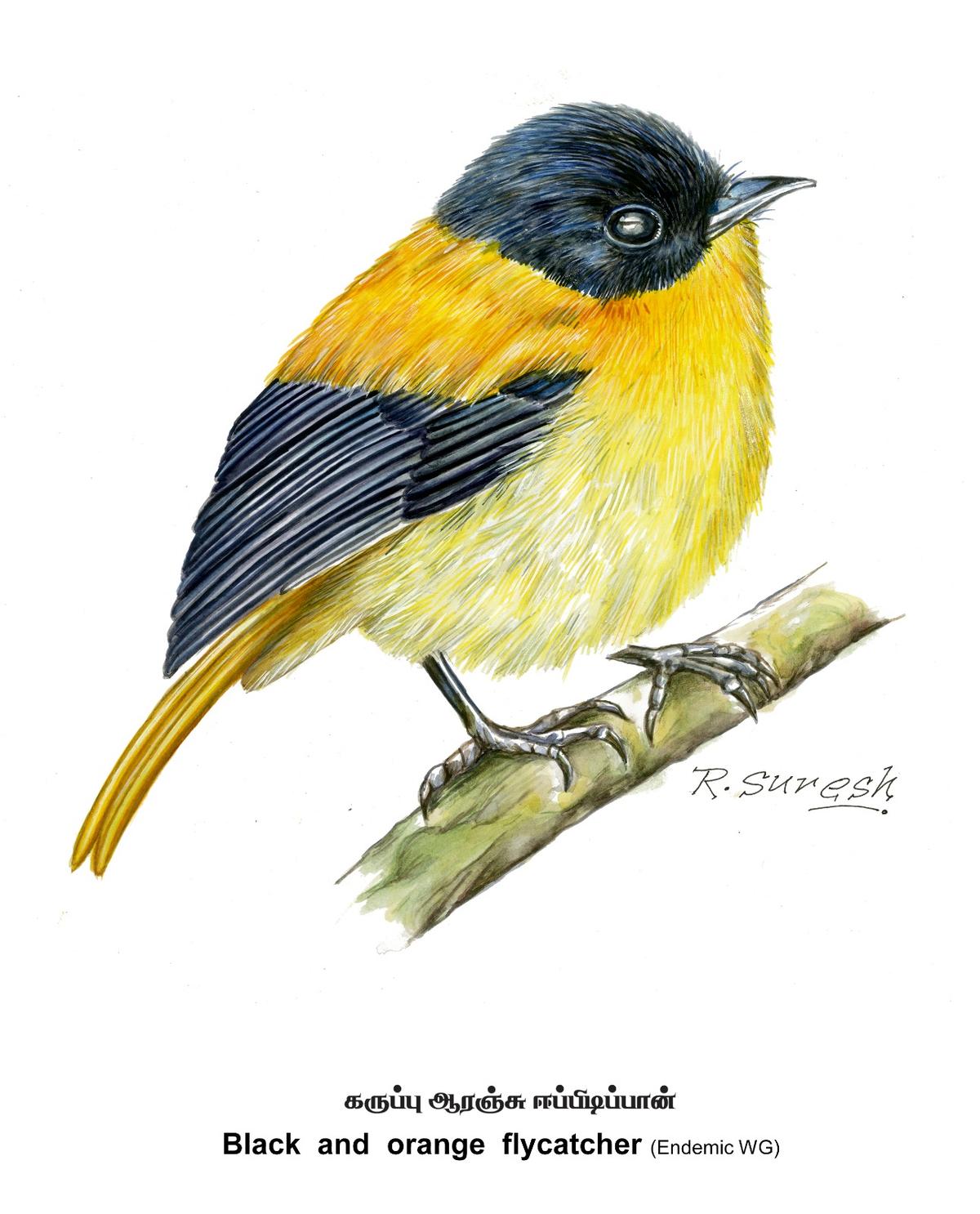
Black-and-orange flycatcher
| Photo Credit:
Special arrangement
The spectrum of botanical illustrators spans a colourful trajectory. Encyclopaedia Britannica cites classical pharmacologist, artist, and physician to Mithradates VI, king of Pontus (120–63 BC) Crateuas’s drawings as the earliest known botanical illustrations. In India, the earliest form of botanical art traces its roots to depictions on early archaeological sites and in ancient manuscripts. This sphere of art flourishes even today, despite the convenience of high-end cameras and mobile phones. Why, though? “Despite all the fancy cameras, a botanical illustrator captures what the lens often misses — clarity, emotion, and essence. Cameras can distort colours or miss tiny structures hidden in shadows, while the brush highlights them with precision. Illustrations unify multiple views — flower, fruit, leaf, dissection — into one clear visual story. There’s a sensitivity in hand-drawn art that breathes life into the subject. The paintbrush doesn’t just record a plant — it interprets it,” says Suresh.
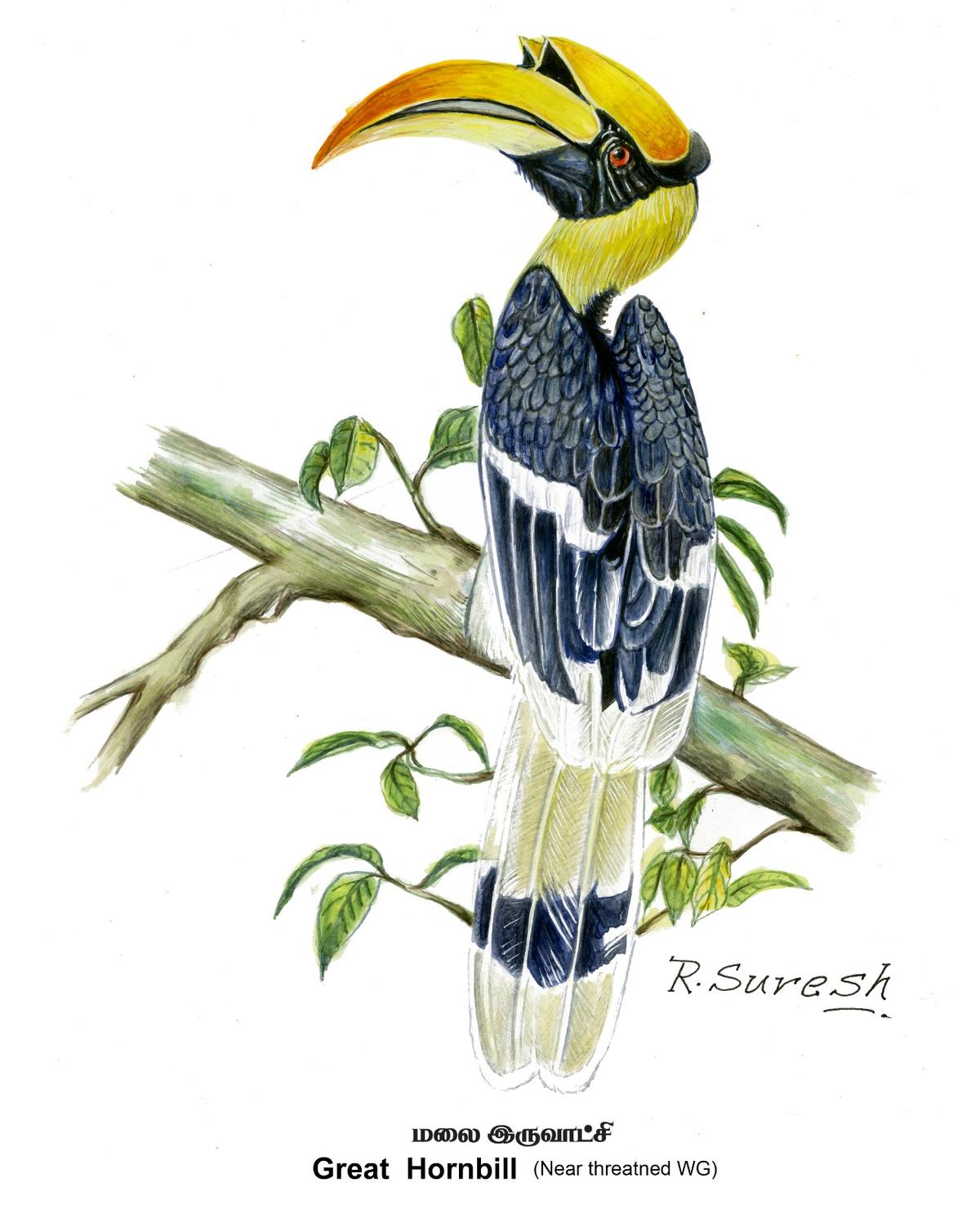
Great hornbill
| Photo Credit:
Special arrangement
True to his words, Suresh’s work stands out for its scientific accuracy and sensitivity to detail. He uses water colours on paper as his medium of expression. His illustrations have been widely acknowledged in academic papers, conservation reports, exhibitions, and they serve as visual records of species that are increasingly threatened by habitat loss, climate change, and human encroachment. Many of his paintings focus on endemic and endangered species of the Western Ghats and India, highlighting their fragile existence and the urgent need for their protection.
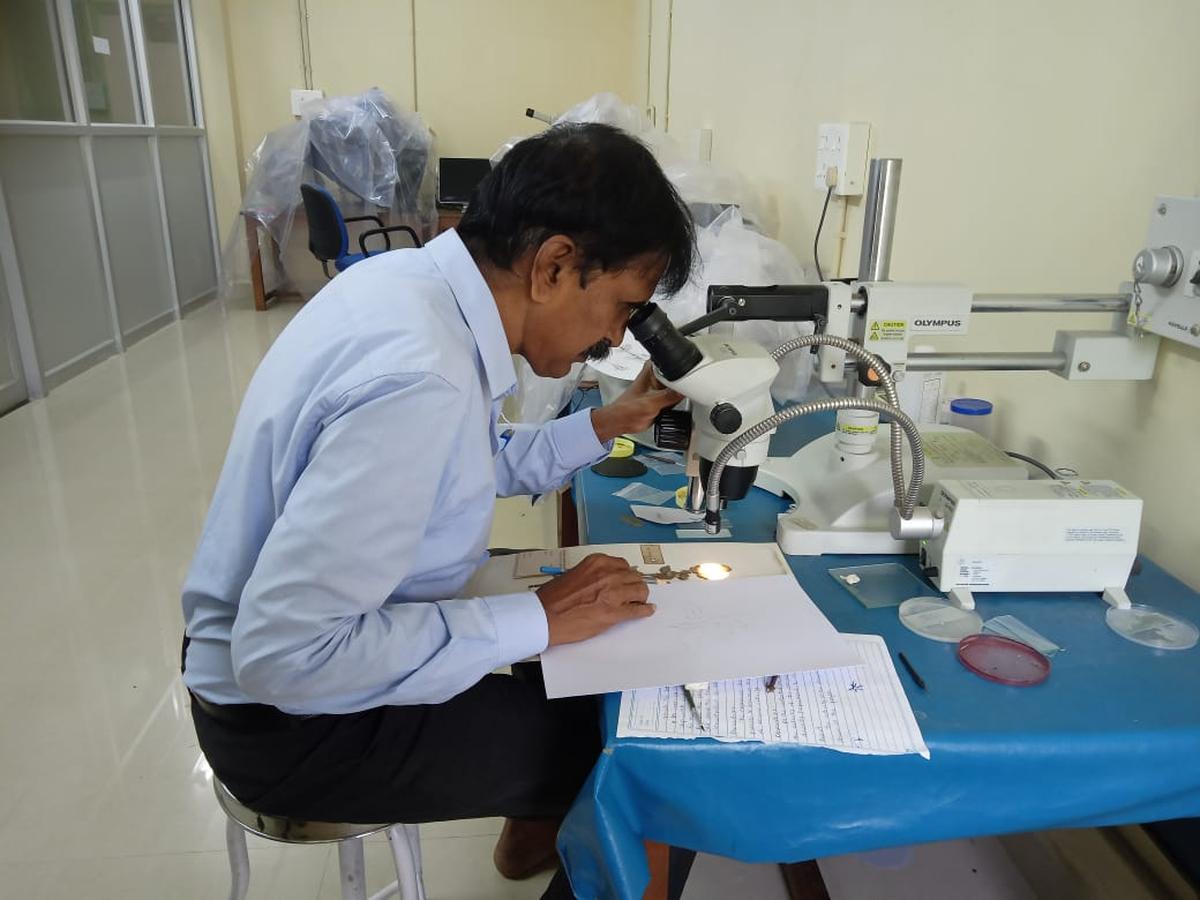
Suresh uses water colours on paper as his medium of expression
| Photo Credit:
Special arrangement
On display at Kadambari Art Gallery, DakshinaChitra Museum, Chennai, till June 2; 10am to 6pm; weekends till 7pm. Entry is included with regular museum admission (closed on Tuesdays).
Published – May 30, 2025 04:33 PM is







